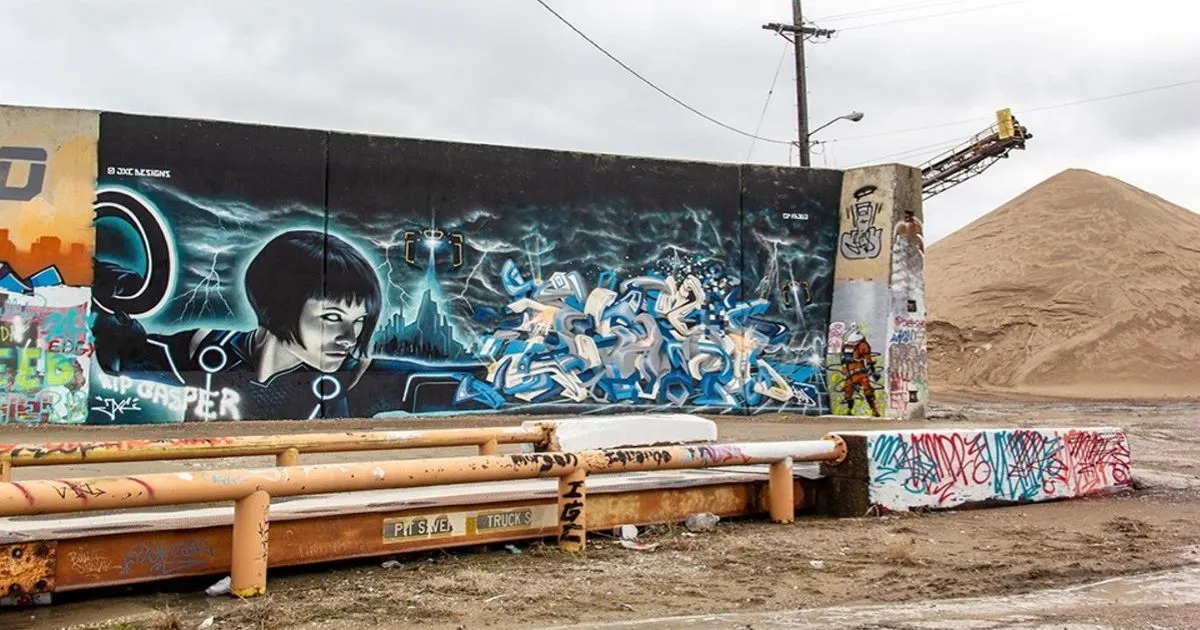Are you looking for a new way to express yourself creatively?
Non traditional art is a great way to do just that. It’s an ever-growing genre that encompasses a wide range of styles and mediums. There’s something for everyone, so you can find the perfect form of expression that speaks to you.
With non traditional art, there are no rules. You can let your creativity run wild and experiment with different techniques and mediums. This is the perfect opportunity to try something new and push your boundaries as an artist.
Click this link to learn more about non traditional art and find classes near you!
Non Traditional Art Overview
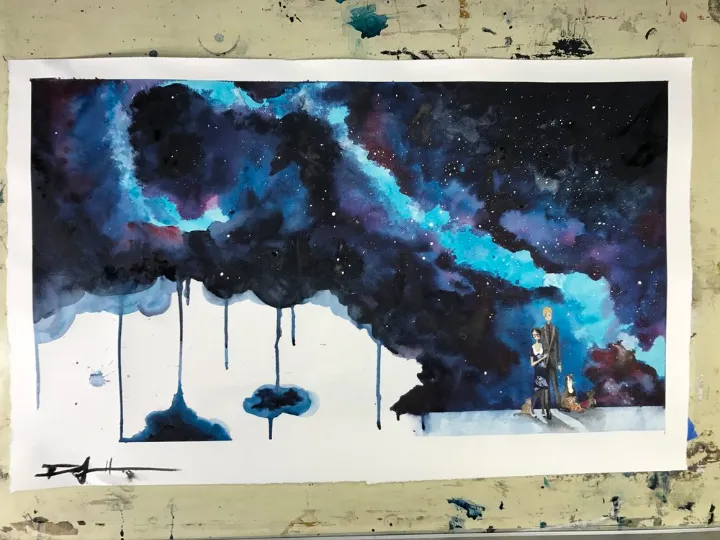
Non traditional art is a term used to describe any form of art that doesn’t fit into the traditional categories. This could include anything from graffiti and street art, to mixed media and performance art. Non traditional art is a growing genre, and there’s something for everyone. With no rules governing this type of art, you can let your creativity run wild and experiment with different techniques and mediums.
There are many different types of non traditional art, each with its own unique style and medium. Some popular forms of non traditional art include graffiti, street art, mixed media, and performance art. Each one offers its own challenges and opportunities for creative expression.
Graffiti
is one form of non traditional art that has been around for centuries. It began as a way for artists to express themselves without the approval or permission of authority figures. Today, it still retains its rebellious spirit, but it has also evolved into an accepted form of expression in its own right.
Street Art
It is another form of non traditional art that has gained popularity in recent years. It often features public murals or installations created by anonymous artists working outside the traditional gallery system. Street art can be found in cities all over the world, and it often has a message or story to tell.
Mixed media
is a type of art that combines two or more different mediums. This could include anything from painting and photography, to sculpture and collage. Mixed media offers artists a chance to experiment with different techniques and materials, and to create unique works of art.
Performance art
is a type of non traditional art that often incorporates elements of dance, theatre, and music. It can be performed in front of an audience, or it can be something that is created purely for the sake of art. Performance art often challenges audiences to think about the meaning behind the performance.
Non traditional art is a growing genre, and there are many different forms to explore. With no rules governing this type of art, you can let your creativity run wild and experiment with different techniques and mediums. So why not give it a try? You might just find your new favorite form of expression.
Why Is Non Traditional Art So Popular?
The world of non traditional art is ever-growing and constantly changing. Sometimes it can be hard to keep up with the latest trends, but that’s what makes it so interesting! Here are five features that make non traditional art unique:
- Non traditional artwork is often interactive.
- It can be difficult to classify non traditional art into specific categories.
- There is a lot of freedom when it comes to creating non traditional art.
- It can be used to communicate complex messages and ideas.
- Non traditional art is often surprising and unpredictable.
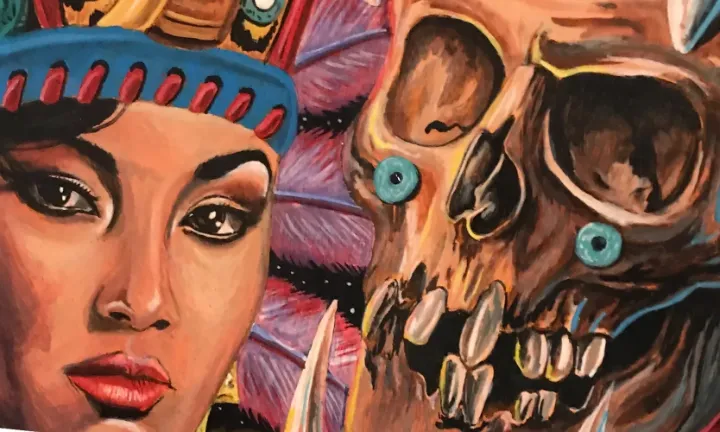
Interactive
One of the most defining features of non traditional art is that it is often interactive. This means that viewers are encouraged to participate in the artwork in some way, whether it be through movement, sound, or other forms of engagement. This type of art is designed to be experienced, not simply observed. It puts the viewer at the center of the piece and allows them to connect with it on a personal level.
Non traditional art can take many forms, but one thing remains constant: it challenges viewers to think outside the box and experience art in new and unexpected ways. So next time you’re feeling bored with traditional art, why not give non traditional art a try? You might just find that it’s more your style.
Difficult to classify
One of the challenges of non traditional art is that it is often difficult to classify into specific categories. This is because it can encompass such a wide range of styles and mediums. It can be a bit daunting for those who are not familiar with non traditional art to try and make sense of it all. But that’s part of what makes it so interesting! There is so much to explore in the world of non traditional art, and each new discovery is sure to surprise and delight.
So if you’re ever feeling lost in the world of non traditional art, just remember that there are no rules. Anything goes! So go out and explore and see what you can find.
Freedom
Another defining feature of non traditional art is the freedom that artists have to experiment and express themselves. This is in contrast to traditional art, which often has strict rules and guidelines that must be followed. Non traditional art provides a space for artists to push boundaries and explore new ideas. This freedom can lead to some truly unique and innovative artwork.
So if you’re ever feeling creatively stifled, why not try your hand at non traditional art? You might just find that it’s the perfect outlet for your creativity.
Complex messages
Non traditional art is often used to communicate complex messages and ideas. This is because it provides a unique platform for artists to express themselves. The freedom to experiment and push boundaries means that non traditional art can be used to tackle difficult topics in new and interesting ways.
So if you’re ever looking for artwork that makes you think, be sure to check out the world of non traditional art. You might just find what you’re looking for.
Surprising and unpredictable
Another defining feature of non traditional art is that it is often surprising and unpredictable. This is because it often breaks the mold of traditional art, which can be quite predictable. Non traditional art is often unexpected and full of surprises. This can be a refreshing change of pace for viewers who are used to traditional art.
So if you’re ever feeling bored with the usual suspects, why not give non traditional art a try? You might just find that it’s more your style.

In general, non traditional art is a great way to explore new ideas and express yourself creatively. It can be difficult to classify into specific categories, but that’s part of what makes it so interesting. This type of art provides freedom for artists to experiment and push boundaries. This can lead to some truly unique and innovative artwork. Non traditional art is often used to communicate complex messages and ideas. It can be surprising and unpredictable, which makes it a refreshing change of pace for viewers who are used to traditional art. If you’re ever feeling lost in the world of non traditional art, just remember that there are no rules – anything goes!
Non Traditional Art VS Traditional Art
There are many ways to create art, and each has its own benefits and drawbacks. Traditional art, while often more refined and precise, can sometimes feel sterile or unoriginal. Non traditional art is often more expressive and emotional, but can also be less polished. Here are five specific ways in which traditional and non traditional art differ:
Subject Matter
When it comes to the subject matter, traditional art often features scenes from history or mythology, while non traditional art is more likely to depict everyday objects or scenes. Traditional art is often created with the intention of portraying things in a beautiful or accurate way, while non traditional art may be more expressive or experimental.
Technique
In order to appreciate the unique beauty of non traditional art, you have to unlearn everything you know about traditional art. With traditional art, the artist strives for realism and accuracy, while with non traditional art, the artist often embraces abstraction and experimentation. This means that traditional art is often more conservative and bound by rules, while non traditional art is more expressive and innovative.
In traditional art, the artist usually starts with an idea or concept and then executes that idea in a representational way. This often means following certain rules or guidelines in order to create a realistic and lifelike image. In contrast, non traditional artists often start with an intuitive approach, allowing themselves to be more expressive and experimental. This can result in artwork that is less representational and more abstract.
Non traditional art often challenges our preconceptions about what art should look like. It can be bold and confronting or subtle and gentle. It can be beautiful or ugly, familiar or strange. Non traditional art invites us to open our minds and see the world in new and different ways. So if you’re looking for something truly unique and original, don’t be afraid to step outside the traditional art world. You might just find something you love.
Medium
Non traditional art mediums have become more popular in recent years. This could be due to the advancement of technology or the change in how people view art. In general, non traditional art is considered to be any kind of art that doesn’t use a traditional medium, such as painting on canvas or sculpting with marble. Non traditional art can include anything from digital art to performance art.
Traditional art is usually defined as any kind of artwork that uses a traditional medium, such as painting on canvas or sculpting with marble. However, there is no clear definition of what constitutes “traditional” media. Some people might argue that traditional media are those that have been used for centuries, while others might say that any medium that is not digital is traditional.
There are pros and cons to both non-traditional and traditional art forms. The main advantage of non-traditional media is their versatility. Digital media can be altered easily, and new materials can be created by combining different elements together. Performance artists also have a lot of freedom when it comes to creating their pieces. They can choose any location they want and use any props they like.
However, one disadvantage of using non traditional art forms is that they can be difficult to sell. It can be hard to find a market for digital art, and performance art is often not very portable. Traditional art forms tend to be more popular with buyers, as they are seen as more valuable and “serious”.
Ultimately, it’s up to the artist to decide what medium they want to use. There are no right or wrong answers, and each type of artwork has its own unique benefits.
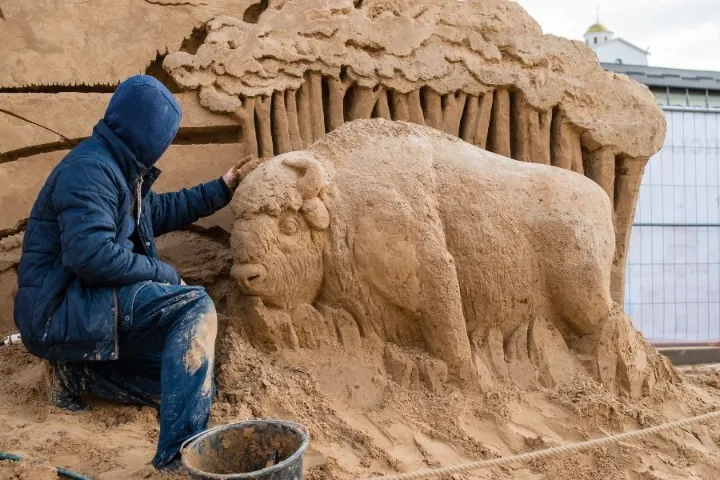
Purpose
The purpose of traditional art is to communicate ideas or messages, typically about religion or politics. The artists who create traditional art are often highly skilled in their craft and use techniques that have been passed down from generation to generation.
The purpose of non traditional art, on the other hand, is not always clear. Some people might argue that its only purpose is to be visually pleasing, while others might say that it has a deeper meaning that goes beyond what the artist intends. Non traditional art can be interpreted in many different ways, which is one of its appeals to some people.
Whether you prefer traditional art or non traditional art, there is no right or wrong answer. It is simply a matter of personal preference. Some people enjoy the beauty and simplicity of traditional art, while others find more enjoyment in the challenge of trying to interpret non traditional art. Whichever type of art you prefer, both can provide you with a unique and rewarding experience.
Audience
The audience of traditional art is typically much more limited than the audience of non traditional art. With traditional art, the audience is typically composed of people who are interested in that specific type of art. This can be due to a variety of reasons, such as personal preference or cultural background. Non traditional art, on the other hand, is often more accessible to a wider range of people. This is because non traditional art does not necessarily adhere to any specific guidelines or standards, which allows for greater creativity and variation. As a result, non traditional art can be appreciated by people from all walks of life.
In addition, traditional art is often seen as more highbrow or elitist than non traditional art. This is because traditional art is often associated with museums and galleries, which can be intimidating or off-putting to some people. Non traditional art, on the other hand, is often found in public spaces such as parks or streets, which makes it more approachable and inviting to a wider range of people.
Ultimately, the audience for traditional art is typically much smaller than the audience for non traditional art. This is due to a variety of factors, such as accessibility, creativity, and approachability. As a result, non traditional art has the potential to reach a wider range of people and have a greater impact.
In general, traditional art is more refined and precise, while non traditional art is more expressive and emotional. However, there are many exceptions to this rule, and the two styles of art are constantly evolving. The best way to see the difference is to experience them both firsthand.
The Benefits Of Learning Non Traditional Art?
It is well known that creative activities like painting, drawing, sculpting and so on help in the development of cognitive skills. But what about learning non traditional art forms? Do they offer any benefits as well? The answer is a resounding yes! In this article, we will discuss some of the key benefits of learning non traditional art forms.
Improve problem solving skills
One of the key benefits of learning non traditional art forms is that they help improve problem solving skills. This is because these forms of art generally involve using unconventional methods and techniques to create something new. This can be extremely useful in helping people learn how to think outside the box and come up with innovative solutions to problems.
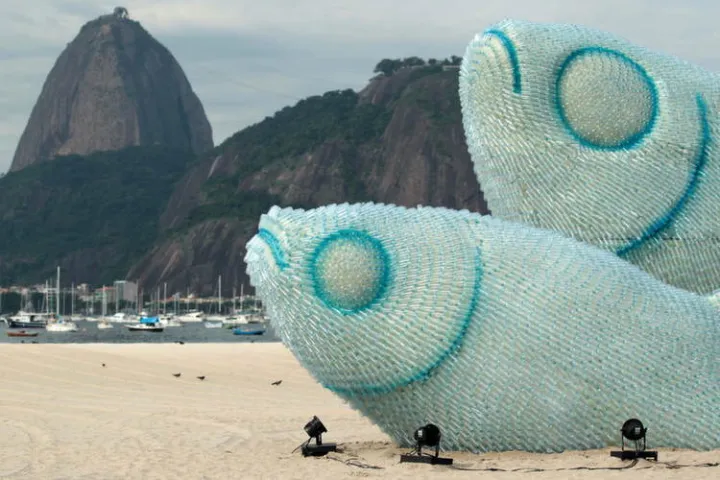
Improve communication skills
Another key benefit of learning non traditional art forms is that they help improve communication skills. This is because these forms of art generally involve working with others to create something new. This can be a great way for people to learn how to communicate effectively and collaborate with others productively.
Promote creative thinking
Another key benefit of learning non traditional art forms is that they help promote creative thinking. This is because these forms of art generally involve using imagination and creativity to create something new. This can be a great way for people to learn how to think creatively and come up with new ideas.
Improve mental well-being
Another key benefit of learning non traditional art forms is that they help improve mental well-being. This is because these forms of art can be used as a form of self-expression and can be a great way to relieve stress and anxiety. Additionally, they can also help people connect with others who have similar interests.
Improve physical well-being
Another key benefit of learning non traditional art forms is that they help improve physical well-being. This is because these forms of art generally involve using the body in creative ways. This can be a great way for people to get exercise and stay physically active. Additionally, it can also help people develop coordination and balance.
In conclusion, there are many benefits to be had from learning non traditional art forms. These forms of art can help improve problem solving skills, communication skills, creative thinking, mental well-being, and physical well-being. So if you are looking for a way to boost your creativity and improve your overall well-being, learning a non traditional art form may be the perfect solution for you!
FAQs About Non Traditional Art
What are some examples of non traditional art?
Non traditional art can be anything that is not a traditional painting or sculpture. Some examples include street art, performance art, installation art, mixed media art, conceptual art, land art, and so on. It can be challenging to define what exactly constitutes non traditional art, as the category is fairly broad. However, one commonality among all forms of non traditional art is that they often push the boundaries of what is traditionally considered to be an artwork.
Why is non traditional art important?
Non traditional art is important because it allows artists to express themselves in new and innovative ways. It also helps to challenge the status quo and push the boundaries of what is considered to be an artwork. Non traditional art is often seen as being more accessible than traditional art forms, as it does not require any formal training or background knowledge. This means that anyone can create and enjoy non traditional art.
Why should I study non traditional art?
There are many reasons why you should study non traditional art. Some of the benefits include the ability to express yourself in new and innovative ways, the opportunity to challenge the status quo, and increased accessibility for anyone who wants to create art. Non traditional art can also be a great way to learn new skills and explore different mediums and materials.
What are some of the challenges I may face when pursuing non traditional art?
Some of the challenges you may face when pursuing non traditional art include a lack of formal training or background knowledge and the difficulty of breaking into the field. However, these challenges can also be seen as benefits, as they allow you to express yourself in new and innovative ways and push the boundaries of what is traditionally considered to be an artwork.
Conclusion
In conclusion, non traditional art is a broad term that encompasses a wide range of styles and approaches. It is often more experimental and unconventional than traditional art and can be seen as a reaction against the established norms of the art world. Non traditional artists often blur the lines between art and life, and their work is typically less concerned with aesthetics and more with ideas or emotions. If you’re looking for something new and exciting in the world of art, non traditional art is definitely worth exploring.

